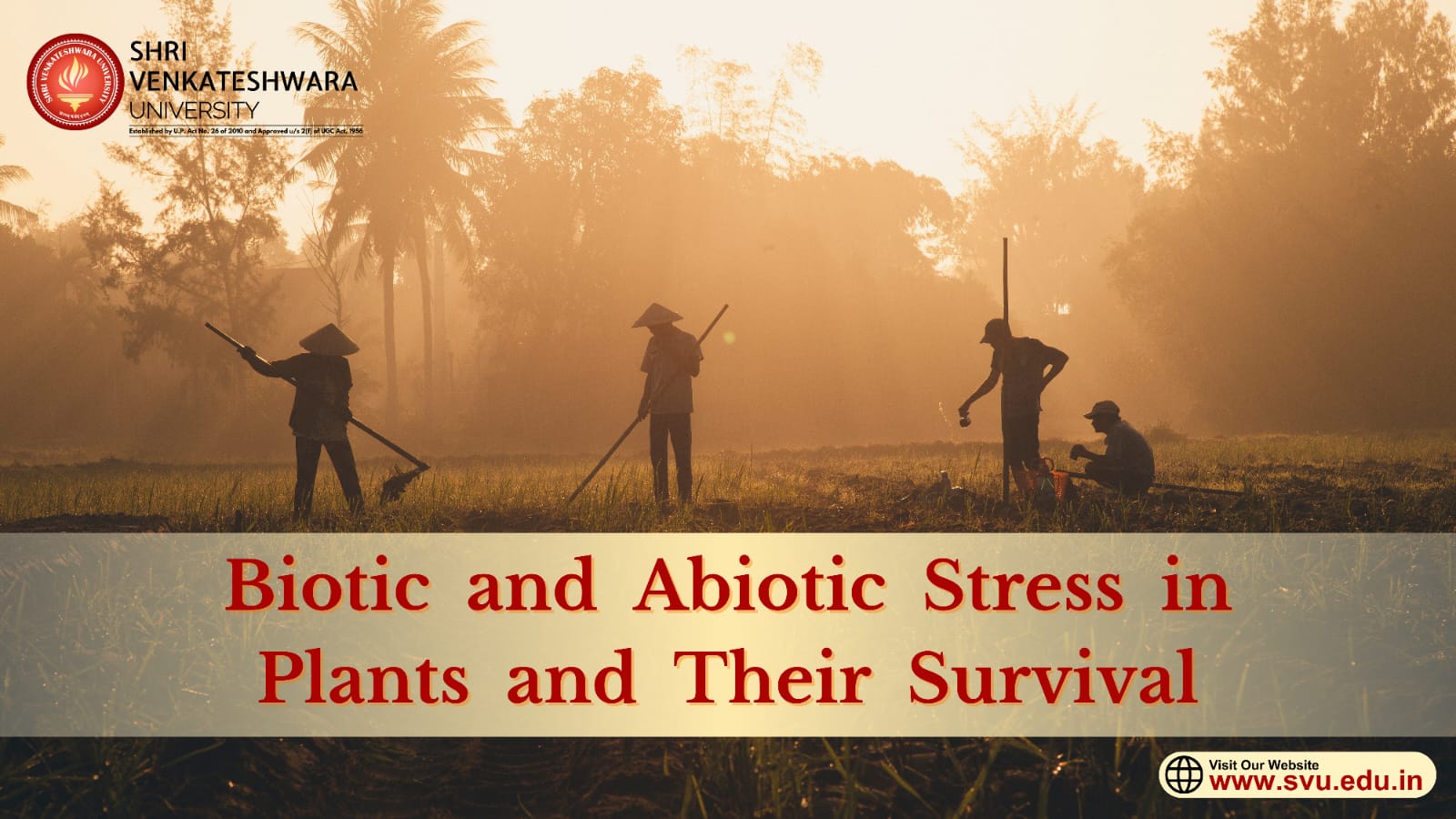
Biotic and Abiotic Stress in Plants and Their Survival
Crop plants are more frequently subjected to stresses in today's changing global climate, including exposure to unstable and extreme climatic events, changes in plant physiology, and growing season, which cause huge losses of up to 60% of global agricultural production due to stress factors. Horticultural crops have a significantly greater role in reducing the negative effects of climate change due to their natural habitat.
There are some major tolerances mechanisms are ion transporters CAT, ascorbate peroxidase (APX), and superoxide dismutase (SOD) activities increased initially before declining at 50 °C, whereas peroxidase (POX) and glutathione reductase (GR) activities decreased at all temperatures tested (20 to 50 °C)., late embryogenesis abundant (LEA) proteins, Osmo protectants, antioxidant defence, and factors involved in signalling cascades and transcriptional control, and these are essentially significant to counteract the stress effects.
Under stress, increased activity of different defence mechanisms is of vital importance. Carotenoids, xanthophylls, non-enzymatic antioxidants (ascorbic acid, glutathione, tocopherols) Antioxidative enzymes (superoxide dismutase, ascorbate, peroxidase, peroxidase, catalase, glutathione reductase) Molecular and Biotechnological Strategies for the Development of Heat Stress Tolerance (Heat Shocked Protein) in Plants Well-characterized HSPs can be grouped into five different families: HSP100 (or ClpB), HSP90, HSP70 (or DnaK), HSP60 (or GroE), and HSP 20 (or small HSP, sHSP).
The HSP70 and HSP60 proteins are among the most highly conserved proteins in nature, consistent with a fundamental role in response to heat stress. Biotic stress in plants is caused by living organisms, especially viruses, bacteria, fungi, nematodes, insects, arachnids and weeds. The agents causing biotic stress directly to deprive their host of its nutrients can lead to death of plants. Biotic stress can become major because of pre- and postharvest losses. Despite lacking the adaptive immune system plants can counteract biotic stresses by evolving themselves to certain sophisticated strategies. The defence mechanisms which act against these stresses are controlled genetically by plant’s genetic code stored in them. The resistant genes against these biotic stresses present in plant genome are encoded in hundreds.
The biotic stress is totally different from abiotic stress, which is imposed on plants by non-living factors such as salinity, sunlight, temperature, cold, floods and drought having negative impact on crop plants. It is the climate in which the crop lives that decides what type of biotic stress may be imposed on crop plants and the ability of the crop species to resist that stress. Many biotic stresses affect photosynthesis, as chewing insects reduce leaf area and virus infections reduce the rate of photosynthesis per leaf area.
It is expected that earth’s temperature will increase by 3–5°C in the coming 50–100 years. As there is continuous increase in temperature and uneven rainfall the changes of flood and drought is always in consideration.
The anthropogenic activities such as excessive fertilizers, inappropriate irrigation and exploitation of metal resources can lead to salt stress to a large extent. Under these circumstances, plants will probably encounter more frequently, concurrently both biotic and abiotic stresses. It is the duty of plant breeders to develop stress tolerant cultivars to secure food security and to ensure safety to the farmers. Molecular work is to be done at the genetic level to develop mechanisms in plants to prevent them from different types of stress conditions. Unless responsive mechanisms are not developed against biotic and abiotic stresses, the plants will continuously be subjected to such stresses and ultimately will prove a great threat to world agriculture.